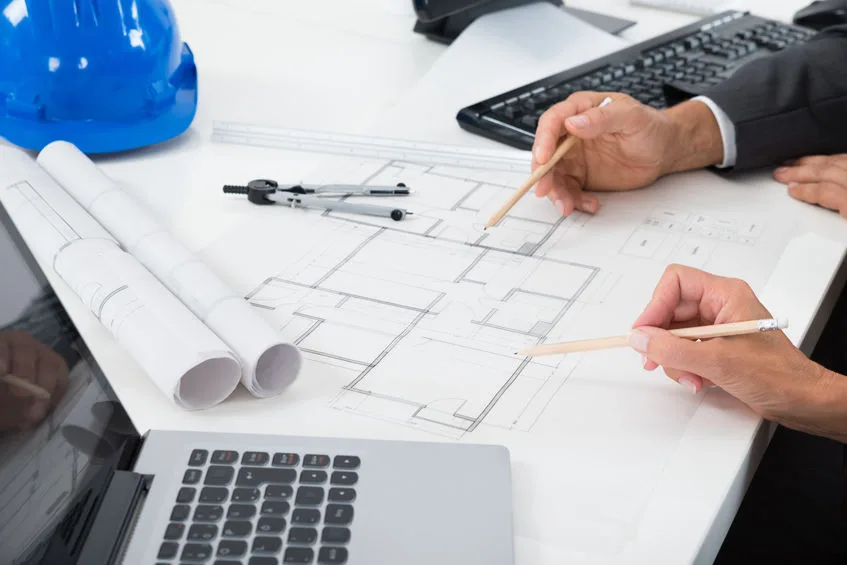Architect-Approved Home Remodeling Ideas
Wiki Article
Understanding the Diverse Occupation Paths Available for Aspiring Architect
As an aspiring Architect, you have a globe of career paths waiting for you. Whether you're attracted to conventional style or the nuances of lasting design, there's a specific niche that aligns with your passions.Conventional Style: Creating Structures and buildings
Conventional architecture concentrates on creating buildings and frameworks that mix capability with aesthetic allure. As you discover this field, you'll appreciate the detailed balance in between type and function. You'll learn to attract inspiration from historic styles, integrating components like balance, materials, and craftsmanship. Your styles can show cultural heritage, showcasing regional customs while fulfilling modern demands.You'll establish abilities in preparing, model-making, and site evaluation, enabling you to picture and connect your ideas effectively. Engaging with clients, you'll require to recognize their vision and translate it into feasible designs.
Moreover, constructing codes and sustainability techniques are necessary in your job, ensuring your structures are risk-free and eco-friendly. As you expand in your career, you'll find opportunities in household, industrial, or also reconstruction projects, each offering unique challenges. Embracing conventional style leads the way for a meeting job that pays homage to the past while forming the future.
Urban Planning: Forming Areas and Public Spaces
As a hopeful Architect, you can play an important function as a metropolitan coordinator, changing exactly how neighborhoods interact and operate. By using community engagement approaches, you'll guarantee that locals have a voice fit their setting. Plus, incorporating lasting style concepts will aid create spaces that not only fulfill today's needs however also safeguard the future.Function of Urban Planners
While many may consider engineers as the sole visionaries behind structures, city planners play a necessary function in forming the wider landscape of neighborhoods and public spaces. They evaluate land usage, zoning laws, and neighborhood requires to create lasting settings that boost lifestyle. By collaborating with numerous stakeholders, you'll assist design parks, transport systems, and residential locations that advertise social interaction and availability. Urban organizers also focus on environmental considerations, making sure that growths incorporate green areas and assistance biodiversity. Your competence in spatial layout and area dynamics allows you to imagine future development while preserving cultural heritage. In this important function, you'll directly influence how individuals experience their environments, making every task an opportunity for favorable modification.Neighborhood Engagement Methods
Efficient community engagement approaches are vital for city organizers to ensure that the voices of locals are heard and valued in the planning process. To promote significant discussion, you ought to prioritize open online forums and workshops where area members can reveal their ideas and problems. Use studies and social media sites to get to a more comprehensive target market, ensuring diverse viewpoints are consisted of. Teaming up with neighborhood companies can improve count on and help with deeper links. It's vital to provide clear information concerning decision-making procedures and suggested tasks, enabling locals to really feel enlightened and empowered. By actively including and listening responses, you'll develop areas that reflect the neighborhood's demands, eventually causing even more successful and lasting urban settings. Embrace transparency and continual discussion for enduring effect.Sustainable Design Concepts
When creating city spaces, integrating sustainable design concepts is vital for creating settings that prosper both environmentally and socially. Consider integrating green rooms, like parks and gardens, to boost biodiversity and enhance air quality.Creating with water preservation in mind is additionally key-- consider rain yards and permeable surfaces to take care of stormwater. Including area members throughout the planning process guarantees that the spaces you create fulfill their needs and motivate social interaction. By embracing these principles, you'll add to vivid, lasting metropolitan landscapes that benefit every person.

Landscape Design: Developing Sustainable Outside Environments
As you explore landscape architecture, you'll uncover necessary design principles that create useful and lovely outdoor areas. Sustainable methods play a crucial duty in ensuring these environments prosper while lessening environmental impact. Plus, you'll find a selection of career opportunities that allow you to make a real distinction in exactly how individuals interact with nature.Design Principles in Landscape
Comprehending style concepts in landscape style is crucial for creating sustainable outside settings that harmonize with nature. You'll require to contemplate elements like percentage, equilibrium, and scale to ensure your styles really feel natural and inviting. Including native plants not just enhances biodiversity however additionally lowers water usage, making your landscape resistant. Assume concerning the circulation of space and exactly how individuals interact with it; paths and seating locations must invite expedition and relaxation. In addition, pay attention to seasonal changes, developing with materials that match the environments year-round (Architect). By prioritizing sustainability and appearances, you can produce outside areas that enrich the neighborhood and advertise well-being. Embracing these concepts will certainly establish a solid foundation for your job in landscape style.Lasting Practices Summary
Sustainable practices in landscape design not only concentrate on appearances however likewise focus on ecological wellness and resource preservation. You can design spaces that advertise soil wellness, such as utilizing organic products and practicing permaculture principles. Eventually, these methods guarantee your layouts benefit both individuals and the atmosphere for years to come.Profession Opportunities Expedition
With a strong foundation in lasting methods, landscape design uses a selection of profession courses that permit you to make a significant influence on the atmosphere. You can function as a landscape developer, creating cosmetically pleasing and practical outside spaces, or specialize in eco-friendly remediation, helping to restore damaged environments. Urban organizers usually team up with landscape designers to produce eco-friendly rooms in city settings, boosting city livability. If you're enthusiastic concerning education and learning, take into consideration coming to be a landscape style teacher, inspiring future generations. Additionally, you could collaborate with nonprofits focused on environmental sustainability or participate in study to introduce brand-new practices. Each course not only shapes lovely settings however likewise promotes a much healthier world for future generations.Sustainable Layout: Concentrating On Eco-Friendly Practices
here As you discover your occupation in architecture, welcoming eco-friendly practices can set you apart in a competitive area. Sustainable style concentrates on developing structures that minimize environmental impact while enhancing resident wellness. By including renewable materials, energy-efficient systems, and sustainable structure methods, you'll add to a greener future.Start by obtaining expertise of green certifications like LEED or BREEAM, which can strengthen your credentials. Consider just how all-natural light, ventilation, and thermal efficiency can maximize style. Work together with designers and ecological consultants to introduce options that decrease waste and preserve resources.
Do not neglect the value of area involvement-- engaging regional stakeholders can motivate layouts that integrate with the setting. As customers increasingly prioritize sustainability, your knowledge in environment-friendly methods will certainly not only attract jobs but likewise accomplish your passion for liable design. Welcome this crucial element of the profession, and enjoy your job thrive.
Historic Conservation: Safeguarding and Bring Back Cultural Heritage
While you commence on your architectural trip, take into consideration the crucial duty of historic preservation in keeping our cultural heritage. This field concentrates on the protection and restoration of significant structures, sites, and frameworks that inform the stories of our past. By taking part in historical conservation, you'll help secure the architectural heritage that shapes neighborhood identity.As a historical conservation Architect, you'll analyze historic value and examine the condition of frameworks. You'll function closely with chroniclers and preservationists to ensure authentic repair methods are employed. This career path allows you to mix imagination with study, enabling you to develop options that value initial materials and workmanship.
Your job not just adds to sustainability by recycling existing structures yet likewise cultivates a feeling of pride within neighborhoods. Accepting this path will certainly help you end up being a guardian of history, protecting the stories and aesthetic appeals that improve our lives.
Interior Architecture: Enhancing Indoor Spaces
Historical conservation and indoor architecture both share a commitment to improving the constructed setting, however they concentrate on various elements. While historic preservation emphasizes preserving a structure's social and historic worth, interior architecture nos in on enhancing interior rooms for capability and aesthetic appeals.As an aspiring Architect, you'll discover that interior style allows you to blend creativity with technical skills. You'll design rooms that not just look good but also advertise convenience and efficiency. This field includes comprehending exactly how light, color, and products interact within a space, affecting mood and use.
You'll work on different jobs, from household homes to commercial workplaces, ensuring that each setting satisfies the requirements of its occupants. By prioritizing customer experience, you can change interiors into practical and inspiring areas, making a significant effect on how individuals engage with their surroundings. Embrace the opportunity to boost indoor atmospheres and form the method individuals work and live.
Industrial Design: Combining Performance With Looks
Industrial design plays an essential duty in producing items that flawlessly blend aesthetics with capability, making sure that what you use daily is not just visually appealing however likewise useful. As an ambitious Architect, you can immerse yourself in this area, concentrating on designing every little thing from furnishings to customer electronic devices. Your work entails recognizing user requirements, products, and making processes, allowing you to develop cutting-edge remedies that enhance daily experiences.In industrial layout, you'll frequently work together with producers, marketing professionals, and designers, guaranteeing that your layouts click here are not only lovely however additionally viable. You'll discover to stabilize form and feature, focusing on functionality without sacrificing style. By honing your abilities in mapping out, 3D modeling, and prototyping, you'll be fully equipped to bring your concepts to life. This occupation path supplies a dynamic setting where creative thinking fulfills functionality, making it a gratifying selection for engineers curious about forming the products of tomorrow.
Regularly Asked Inquiries
What Educational Certifications Do I Required to Come To Be a Designer?
To become a designer, you'll require an expert level in architecture, generally a Bachelor's or Master's. Additionally, you'll need to complete an internship and pass the Architect Registration Assessment to exercise legally.Exist Qualification Needs for Various Architectural Career Paths?
Yes, there're qualification requirements for various architectural courses. Architect. You'll need to pass examinations, full teaching fellowships, and occasionally go after specialized training, depending upon your selected emphasis, like landscape style, city layout, or historic preservationWhat Software Program Skills Are Necessary for Architects Today?

Exactly How Can I Gain Practical Experience While Researching Architecture?
You can obtain useful experience by interning at architectural firms, joining layout competitors, volunteering for community jobs, or teaming up with schoolmates on real-world tasks. These possibilities boost your skills and develop valuable links in the industry.What Task Opportunities Exist Outdoors Traditional Design Firms?
You can discover numerous job chances outside conventional style firms, like city preparation, interior decoration, landscape architecture, building management, realty development, and even functions in sustainability consulting. Each deals distinct difficulties and benefits.Whether you're drawn to standard architecture or the nuances of sustainable style, there's a niche that lines up with your rate of interests.When developing urban rooms, including lasting layout concepts is important for developing environments that grow both ecologically and socially.As you check out landscape design, you'll find crucial style principles that develop useful and lovely outdoor spaces.Recognizing design concepts in landscape style is vital for developing lasting outside atmospheres that integrate with nature.In industrial design, you'll typically team up with makers, online marketers, and engineers, guaranteeing that your layouts are not just attractive however additionally possible.
Report this wiki page